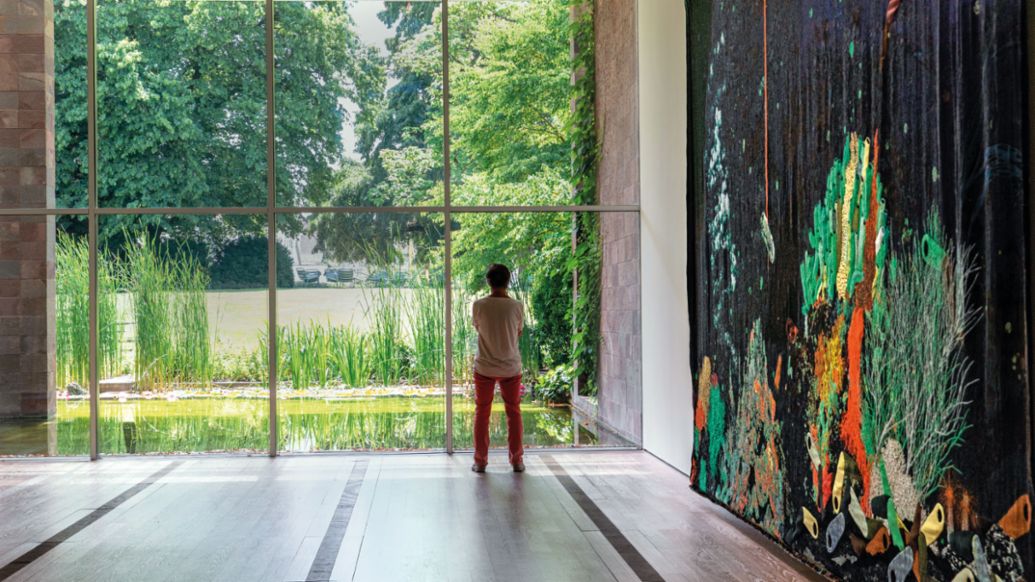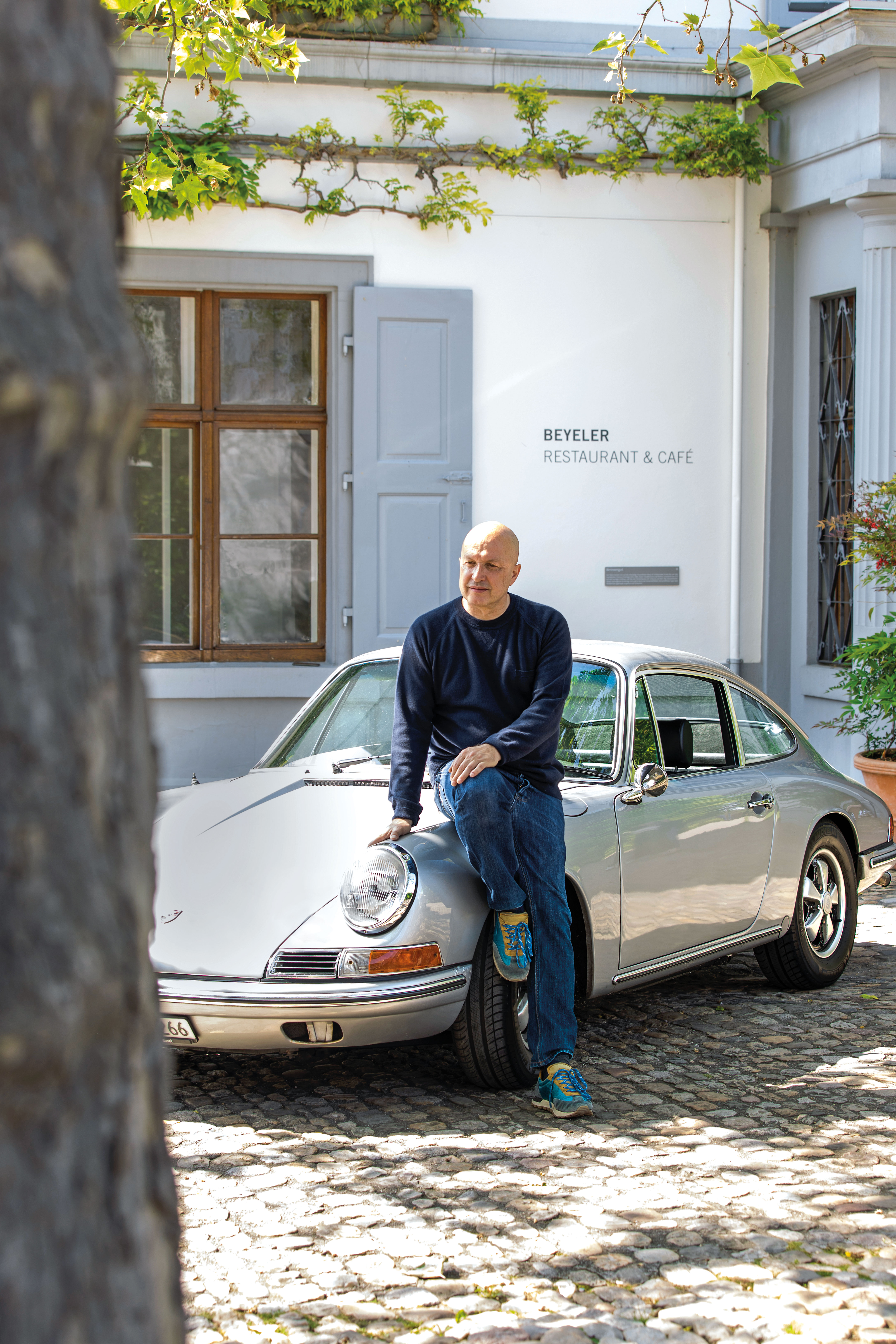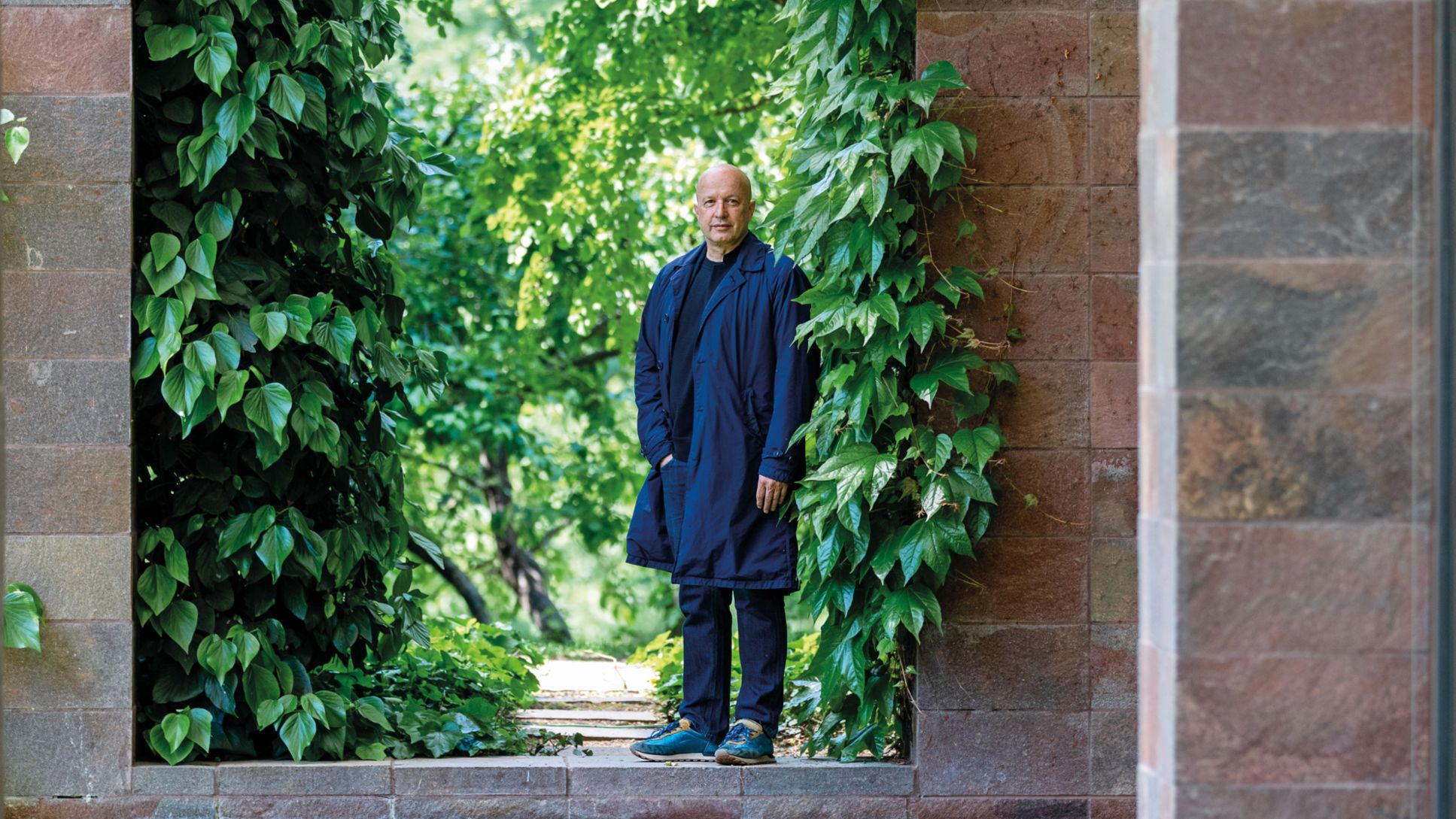Designed by top architect Renzo Piano, the magnificent Fondation Beyeler building in Riehen near Basel appears to be painted into the landscape. Switzerland’s most visited art museum is a location of superlatives, offering a collection of more than 400 works of classic modernity and contemporary art by some of the greatest masters in history, including Claude Monet, Vincent van Gogh, Pablo Picasso, and Louise Bourgeois. Established in 1982, the foundation showcases the collection of Swiss gallery owner Ernst Beyeler and his wife Hildy, which was compiled over a period of more than 50 years and is now managed by Sam Keller. And his journey to where he is today was anything but conventional.
Keller is a restless, entrepreneurial, and bold. In 2000, he was named Director of Art Basel by Ernst Beyeler, who cofounded the Art Basel fair. This wasn’t the first time the two of them had crossed paths, but for Keller it was one of the most important moments. “I wouldn’t be where I am today without Ernst Beyeler,” he says. “I’m so lucky to have met him.” Keller hit the ground running and soon expanded Art Basel into the US. Art Basel Miami Beach, founded in 2001, drew in the crowds like a magnet. Not only was the art scene jubilant, but the captivated trade press referred to it as a “stroke of genius” and praised Keller’s audacity. He had transformed a “European super fair” into a “global double event.” Currently the most comprehensive international fair for contemporary art in North America, the event will be held on the first weekend of December this year.

This success could have opened any doors for Keller – he could be working for the world’s most popular museums – but Keller has remained true to his mentor. He followed the call of his patron again in 2008 and was appointed Director of Fondation Beyeler.
At top of the international art scene
For quite some time, it didn’t look like the newcomer, who is now 57 years old, would ever make it to the top of the international art scene. Successful circles are quick to label anyone who, like Keller, doesn’t complete their art studies a failure. That made his “masterpiece” all the more surprising: in 2015, he achieved something that no one else had in the past 60 years, which was to acquire the few fragile works of art by Paul Gauguin (1843–1903), one of the most influential French artists, for a show in Switzerland. Others followed, such as the exhibition Life by Ólafur Elíasson and an exhibition on Francisco de Goya (1746–1828), who is considered the first pioneer of modern art.
Sam Keller is as unpretentious and uncomplicated as his thinking is complex and profound and his work agile. He loves what he does. He’s a designer, driven by passion. Just one year after acquiring Gauguin for Fondation Beyeler, he began planning construction of a new museum building and hired architect Peter Zumthor to expand it. The groundbreaking ceremony was held in 2022, and construction is ongoing. The new, three-part building in the neighboring 19th-century Iselin-Weber Park, which is still private to this day, will provide another 1,500 square meters of exhibition space. Like the main building, it blends harmoniously with nature. Keller works tirelessly to promote the legacy of his mentor, who died in 2010, on a global scale.

But what led Keller to art? What leads most people to art? People like to tell the story about how Sam Keller didn’t grow up in an artistically minded household. “I didn’t learn art. I felt it, got to grips with it, and engaged with it, and thereby discovered it for myself,” he explains. That’s how it was for him. It was chance and an interest in architecture that led him to Art Basel and Ernst Beyeler. Curiosity is one of his most important character traits. “It fuels the courage to take a risk and the desire to build relationships,” says Keller. “And apparently I have the ability to identify and promote the talent of others.”
“Just like art, cars are also perceived differently by different people”
His penchant for timeless design and aesthetics is also reflected in his silver-colored 912 with black interior, which he’s had since 2014. Produced between 1965 and 1969, the Porsche sports car is quite rare – and Keller’s only vehicle. “The movie Spy Game with Robert Redford had the biggest influence on my decision to buy,” explains Keller. In the 2001 thriller, the main character also drives a 912.
Today, Keller still feels a great sense of joy whenever he gets behind the wheel of his model. “Many others do too, by the way,” he says. Two people have already asked him about the car today, including the museum gardener. “Just like art, cars are also perceived differently by different people,” explains Keller. “People see a work of art or a vehicle and immediately make an aesthetic judgement. And then there are people who want to know more, who want to take a look under the hood. I’m always fascinated when I meet someone who tells me something about my car that I didn’t already know.”
The complexity, the perception on an aesthetic, technical, and content level – that’s what excites Keller. “The great thing about this work is that you can fall in love again and again,” he says enthusiastically. “It can happen anytime. But what you’re actually always in love with is what you’re doing at that moment, the things you rediscover. That’s the most important thing in the world.”
Fondation Beyeler
Fondation Beyeler is one of the most visited art museums in Switzerland and has welcomed more than eight million guests since it opened. The museum building, designed by the multi-award-winning Italian architect Renzo Piano, is located in an English park with a historic villa and a population of older trees in harmony with nature. Located to the south, the pond with water lilies reflects Claude Monet’s works and creates a smooth transition between the interior and exterior. Sam Keller has been the Director of Fondation Beyeler since 2008.
Info
Text first published in the Porsche magazine Christophorus 409.
Author: Jo Berlien
Photos: Sabina Paries, Mark Niedermann
Copyright: All images, videos and audio files published in this article are subject to copyright. Reproduction in whole or in part is not permitted without the written consent of Dr. Ing. h.c. F. Porsche AG. Please contact newsroom@porsche.com for further information.

